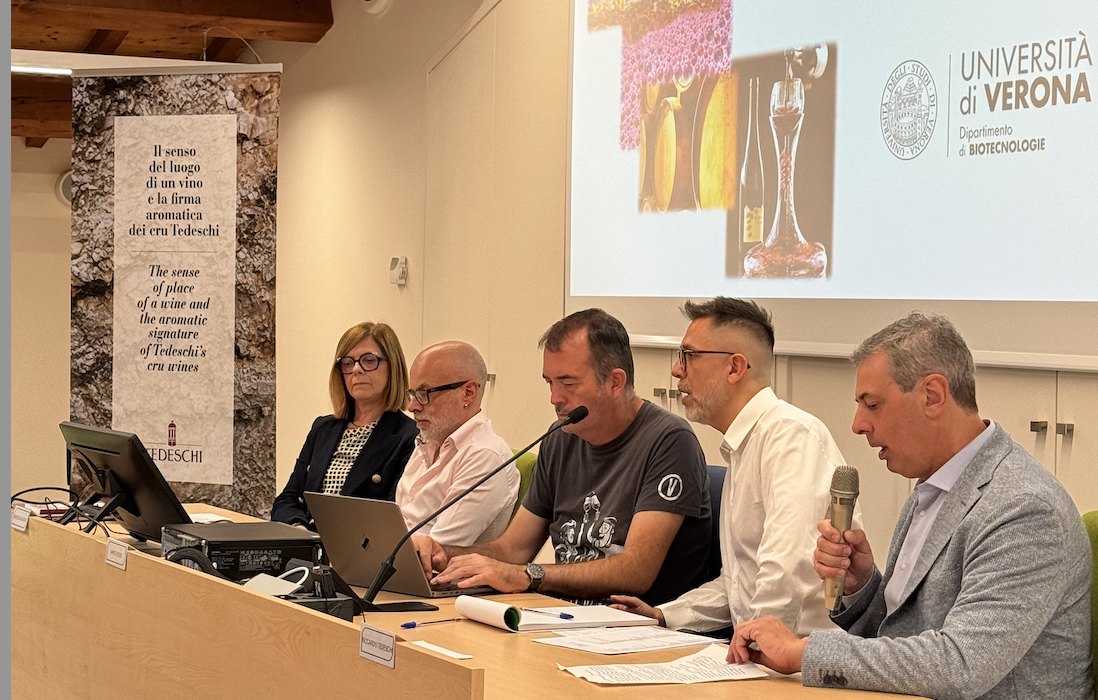Tedeschi Wines: the sense of place of wine a journey between Sinner and Proust
Can a very technical conference – The sense of place of a wine and the aromatic signature of Tedeschi’s crus – become as engaging as a rock concert? The answer is yes, if two strong personalities are presenting the conference: Professor Maurizio Ugliano and Jamie Goode. The former has a great curriculum that would make any other academic blush, with extensive experiences between Naples and Verona, passing through Australia and the Napa Valley and he cultivates a truly rock soul (he does, in fact, play the bass in a band); the latter is a journalist with a doctorate in biology, a wine columnist for The Sunday Express, and a writer for publications such as Harpers, The World of Fine Wine, Decanter, GrapesTALK and Sommelier Journal- someone who can command the audience wearing a t-shirt and sneakers. To this already explosive combination, it was then added the authority of a reality like Tedeschi, which can boast a history spanning almost four centuries and which has believed for a long time in the great richness of Valpolicella’s wine production. Today the company is led by the three siblings – Sabrina, Riccardo and Antonietta, each with a very specific role. As they themselves revealed with irony, during the conference, which was held on 6 June at the San Floriano University Centre, Villa Lebrecht (a truly enchanting place), one of them is full of ideas (Riccardo), one has the concreteness to carry them forward (Sabrina) and one holds the purse strings (Antonietta). It was indeed from one of Riccardo’s ideas that this study on the link between soil and the aromaticity of wines was born. He then found in Professor Ugliano the right support to carry forward this intuition and give it scientific credibility. In Jamie Goode, he found the ideal communicator to shake off the technical SIDE and illustrate the definition of terroir also through wonderful freehand drawings. What came from the conference? Long story short, we understood that: the sense of place of a wine exists (and it’s a bit like Proust’s infamous madeleine), it can be measured; it depends on the grape but it manifests itself with winemaking and can be managed through informed production choices, both in the vineyard and in the cellar. In short, wine is like Sinner: it has its winning (aromatic) hits.

